The adaptable employee: Thriving in dynamic work environments
As a recruitment agency in Cape Town, we can safely say the modern workplace is constantly evolving, driven by technological advancements, market shifts, and global events. In such an unpredictable landscape, adaptability has become one of the most valuable traits an employee can possess. Adaptable employees not only navigate change effectively but also embrace uncertainty with resilience, turning challenges into opportunities for growth. But what exactly makes an employee adaptable? How can professionals cultivate this crucial skill? And why is adaptability essential for businesses seeking to build a robust, future-proof workforce? Let’s explore how adaptability contributes to professional success and how companies can harness this trait for long-term growth.
What does it mean to be an adaptable employee?
An adaptable employee is someone who can respond effectively to new challenges, unexpected changes, and shifting workplace demands. They don’t just survive change—they embrace it, using it as an opportunity to learn, grow, and contribute positively to their organization.
Unlike employees who may struggle with uncertainty, adaptable individuals remain composed and proactive when faced with change. They are quick thinkers, able to adjust their strategies and behaviors to align with new circumstances, whether it be evolving job responsibilities, emerging technologies, or sudden shifts in company objectives. Their ability to remain flexible, resilient, and resourceful makes them invaluable assets to any organization.
How to identify an adaptable employee
Recognizing adaptability in employees or candidates is essential for businesses seeking a future-ready workforce. Adaptable individuals exhibit a distinct set of traits and behaviors that make them stand out in the workplace.
Key traits of an adaptable employee
1 Resilience in the face of uncertainty
Adaptable employees don’t allow challenges to derail them. Instead of reacting negatively to change, they approach it with a problem-solving mindset, learning from setbacks rather than dwelling on them. They can quickly bounce back from disappointments, using failures as stepping stones for growth.
2. Open-mindedness and receptivity to feedback
These individuals actively seek out new perspectives, ideas, and approaches. They are not set in their ways and are open to constructive criticism, using it as a tool for self-improvement. They welcome feedback from colleagues, managers, and clients, seeing it as an opportunity to refine their skills and performance.
3. Strong problem-solving skills
When faced with unexpected obstacles, adaptable employees don’t panic. Instead, they assess the situation objectively, identify possible solutions, and implement the most effective strategy. They are comfortable thinking outside the box and adjusting their plans when circumstances change.
4. Commitment to continuous learning
Adaptable employees are lifelong learners. They actively seek new knowledge and skills, whether through formal education, workplace training, or self-directed learning. They stay ahead of industry trends, embrace new technologies, and are always looking for ways to improve their performance.
5. Emotional intelligence and stress management
Change can be stressful, but adaptable employees handle pressure well. They remain calm under uncertainty, regulate their emotions effectively, and support their colleagues in times of transition. Their ability to understand and manage both their own emotions and those of others makes them excellent team players and leaders.
6. Versatility in workplace roles and tasks
Rather than being confined to a single set of responsibilities, adaptable employees are willing and able to take on new roles as needed. They are comfortable wearing multiple hats, learning new tools, and adjusting their workflows to meet evolving business needs.
Identifying and nurturing adaptability in employees is not just a hiring strategy—it’s a competitive advantage.
The importance of adaptability in the workplace
Learning how adaptability contributes to professional success is essential, businesses that operate in fast-paced industries, such as technology, healthcare, and finance, require employees who can keep up with rapid changes. An adaptable workforce is crucial for several reasons:
1. Enhancing business agility
Companies must be able to pivot strategies, adopt new technologies, and respond to market changes quickly. Adaptable employees facilitate this transition, ensuring that businesses remain competitive.
2. Increasing employee productivity and engagement
Employees who can embrace change are more likely to stay motivated and engaged in their work. Rather than feeling overwhelmed by challenges, they take proactive steps to overcome them.
3. Encouraging innovation and growth
A flexible workforce fosters innovation. Adaptable employees are open to experimentation and new ways of thinking, which can lead to groundbreaking ideas and business growth.
4. Improving team collaboration
When employees are willing to adapt, they work better in teams, communicate effectively, and contribute to a positive workplace culture.
How to cultivate adaptability in the workplace
While some people naturally possess an adaptable mindset, it is also a skill that can be developed over time. Businesses can nurture adaptability among their workforce through the following strategies:
1. Promote a growth mindset
Encourage employees to view challenges as learning opportunities rather than obstacles. A growth mindset fosters resilience and continuous improvement.
2. Provide ongoing learning and development
Offer training programs, mentorship opportunities, and upskilling initiatives to help employees build new competencies. This prepares them to take on new roles and responsibilities as needed.
3. Foster an open and inclusive culture
A diverse workplace encourages adaptability by exposing employees to different perspectives, ideas, and work styles. Promote a culture where employees feel safe expressing their opinions and trying new approaches.
4. Support employee well-being
Stress and burnout can hinder adaptability. Providing wellness programs, mental health resources, and work-life balance initiatives can help employees manage change more effectively.
5. Encourage experimentation and risk-taking
Organizations should create an environment where employees feel comfortable taking calculated risks without fear of failure. This approach drives innovation and strengthens adaptability.
Embracing adaptability for long-term success
Learn how adaptability contributes to professional success. Employees who embrace change with resilience, openness, and a problem-solving mindset not only enhance their own career prospects but also contribute to a thriving, innovative workplace culture. Businesses that prioritize adaptability in their workforce gain a significant competitive edge, as they are better equipped to navigate disruptions, seize new opportunities, and maintain agility in the face of uncertainty.
For organizations, investing in adaptable talent is more than just a short-term hiring decision; it is a strategic move toward long-term success. By fostering a culture of continuous learning, open-minded collaboration, and flexibility, companies can future-proof their operations and ensure they remain at the forefront of their industries.
At MASA, we specialize in connecting businesses with professionals who are ready to tackle challenges and drive success. If your organization is looking to build a resilient and future-ready workforce, let us help you find the right talent today.












